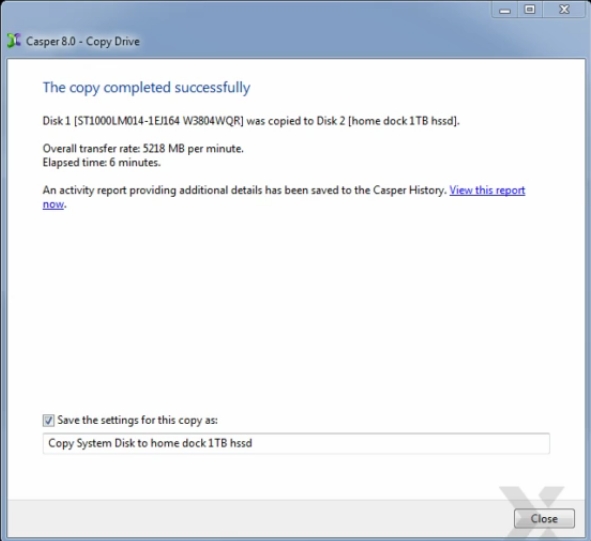Users Online
· Guests Online: 44
· Members Online: 0
· Total Members: 188
· Newest Member: meenachowdary055
· Members Online: 0
· Total Members: 188
· Newest Member: meenachowdary055
Forum Threads
Newest Threads
No Threads created
Hottest Threads
No Threads created
Latest Articles
Articles Hierarchy
Cloning a Hard Drive with Casper
Cloning a Hard Drive with Casper
Posted on 2014-08-14
66,114 Points
This video Micro Tutorial explains how to clone a hard drive using a commercial software product for Windows systems called Casper from Future Systems Solutions (FSS). Cloning makes an exact, complete copy of one hard disk drive (HDD) onto another drive, thereby providing an excellent backup function, as well as the ability to upgrade drives, such as going to a higher capacity drive and/or from an HDD to a solid state drive (SSD) or solid state hybrid drive (SSHD).
Video Steps
1. Download the Trial Edition
Visit the Casper website at:
https://www.fssdev.com/products/casper/trial/
Click one of the download links:

2. Install casper_se_trial_setup.exe
After downloading, run the installer. FSS offers a free 30-day trial, but keep in mind that the trial edition does not have the volume resizing feature. The licensed product does have it, meaning Casper can clone to the same size drive or to a larger one or even to a smaller one, as long as there is enough space on the smaller one to house the used (non-free) space from the larger one. The licensed product is not free, but is reasonably priced, in my opinion:http://www.fssdev.com/shop/
3. Run Casper and click on the Copy Drive icon
This performs the cloning operation.
4. Select the drive you want to copy
Casper will display a list of all drives on the system: Select the source drive, that is, the one you want to clone, and click the Next button.
Select the source drive, that is, the one you want to clone, and click the Next button.
5. Select the destination drive
Casper will display a list of the drives on the system that are capable of housing the clone: Select the destination drive, that is, the one you want to receive the clone, and click the Next button.
Select the destination drive, that is, the one you want to receive the clone, and click the Next button.
6. Confirm the overwrite warning
Casper will warn you that the destination disk contains data (unless it's a new drive): Click the Next button to confirm that you want to overwrite the data.
Click the Next button to confirm that you want to overwrite the data.
7. Specify the partition size on the destination drive
Casper will ask you to specify the size for each partition on the destination drive: The default is to allocate the partition sizes proportionally, but you may manually override that to create whatever sizes you want on the destination drive (of course, a partition needs to be big enough to house the used space from the source partition).
The default is to allocate the partition sizes proportionally, but you may manually override that to create whatever sizes you want on the destination drive (of course, a partition needs to be big enough to house the used space from the source partition).
8. Schedule the clone
Casper will provide options on when to run the clone: You may either do it now or schedule it for later, which Casper does by utilizing the Windows Task Scheduler.
You may either do it now or schedule it for later, which Casper does by utilizing the Windows Task Scheduler.
9. Casper will perform the clone
When it is done, it will show the transfer rate and how long it took: It also creates an activity report with a lot more information about the cloning operation. Click the link to view the report or click the Close button.
It also creates an activity report with a lot more information about the cloning operation. Click the link to view the report or click the Close button.That's it - you're done! If you find this video to be helpful, please click the thumbs-up icon below. Thank you for watching, Joe
Comments
No Comments have been Posted.
Post Comment
Please Login to Post a Comment.



